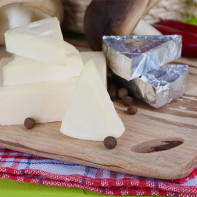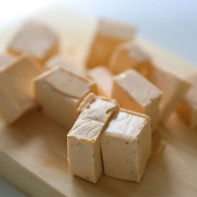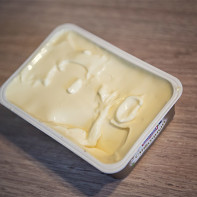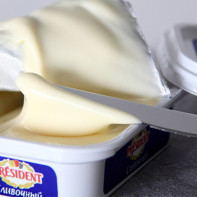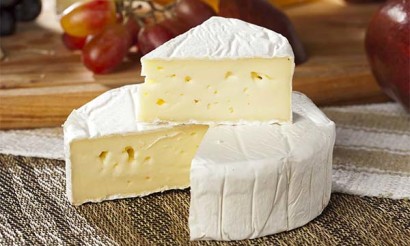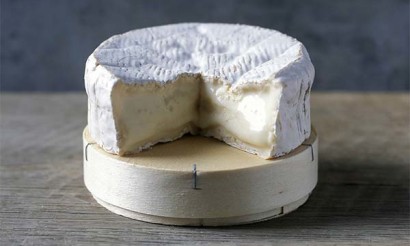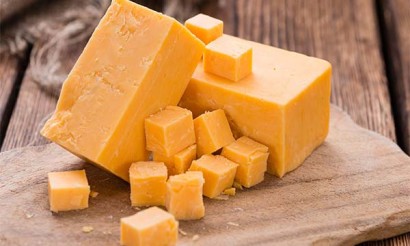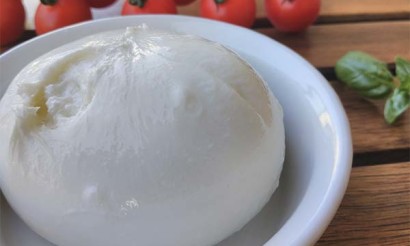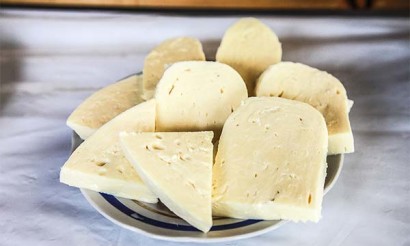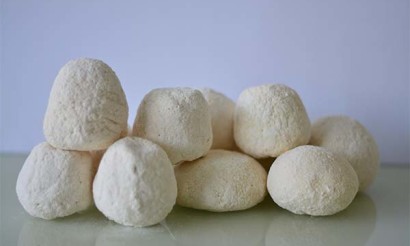Cream cheese: composition, benefits and harms, recipes for cooking
Tender and creamy taste of processed cheese is known and loved by adults and children. This is one of the most popular products that contain milk. Cream cheese with savory additions of mushrooms, herbs, spices attracts gourmets. Sweet cheeses with the addition of vanilla, cocoa serve as a wonderful addition to the morning tea or coffee. This tasty and useful product is used to prepare first courses, salads, desserts, baked goods.
- What is melted cheese made of
- Types
- What is the difference between processed cheese and regular cheese
- Composition and calories
- What is the usefulness of processed cheese
- General health benefits
- For Women
- For Men
- Pregnancy
- Breastfeeding
- For children
- For weight loss
- Cooking
- Harm and Contraindications
- How to choose and store processed cheese
- Can I keep in the freezer?
- How to Make Processed Cheese at Home
- What can be made of melted cheese: Recipes
- Cheese Soup with Broccoli
- Tenderness Salad
- Hot Grilled Sandwiches
- How to Melt Processed Cheese
- Can cats be given processed cheese
- Interesting facts about processed cheese
What is processed cheese made of?
The main component for the manufacture of processed cheese are hard varieties of the same name product. The unripe or improperly formed heads go for processing.
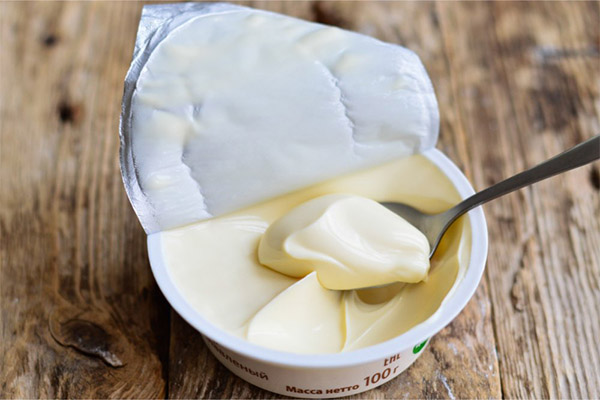
The idea to process hard cheeses, which for some reason can not get to the market, came to the minds of experts in cheese-making and connoisseurs of this product - the Swiss.
Walter Gerber and Fritz Stettler melted a batch of emmental cheese that was not presentable for sale. Sodium citrate was added to the base to give it a special flavor. This event took place in 1911. Many people liked the new product and within a few years the processed cheese was already on the market.
Since then, a lot of time has passed and in the manufacturing process began to use other components. There are processed cheese, made on the basis of cottage cheese, milk powder, cream concentrate, butter with the addition of all kinds of seasonings and flavorings.
Types .
The production technology is the same, but this is not the reason for the uniformity of products.
Cream cheese has a different percentage of fat content. It ranges from 25-60%. The product differs in consistency: cheeses are dense, viscous, and pasty. They can be sterilized or pasteurized, have different shapes and packaging, and differ in taste.
The main types include:
- Scrapple - quite dense and firm. It comes in fat content up to 70%. Well cut, rubbed, so it is excellent for cooking salads, soups. Has a range of flavors. Usually usual rectangular shape, packed in foil.
- Pasty cheeses are similar in consistency to thick sour cream. A high percentage of moisture and fat makes them malleable. They are perfectly spreadable on bread, crackers, and biscuits. This kind of product comes in plastic jars or boxes. It has a variety of flavors and aromas.
- Sausage processed cheese has the thickest consistency of all kinds. It is shaped like sausage sticks - hence the name. It contains a small percentage of fat, so it is considered the most low-calorie of all processed cheeses. A distinctive feature of the product is the additional processing - smoking. Spice creamy flavor gives cumin, bitter pepper.
- Sweet melted cheese can be pasty or slice. Cocoa, vanilla, chocolate chips and coffee are used as additional ingredients.
In addition to dairy processed cheese, and produce products based on vegetable fats. Most often it is soy. They are suitable for people with lactose intolerance.
What is the difference between processed cheese and conventional
Milk, sourdough and enzymes to give density and the right consistency of the finished product - the main components for the manufacture of conventional varieties of cheese. Most of the additional ingredients are of natural origin, although producers are not squeamish about preservatives, flavor enhancers. The process of cheese-making is quite long, going through several stages. The most time-consuming is aging. Depending on the type of hard cheese, it can take from several months to a year.
The basis of processed cheese is hard cheese. At 75-95 ° C regular cheese is melted, turning it into a homogeneous mass. Then other ingredients are added: milk powder, butter, cream. To achieve the desired consistency of the producers use thickeners, often of artificial origin.
Processed kinds of cheese contain more flavor enhancers, preservatives and flavorings than in the hard.
It does not take long to prepare processed cheese. Therefore, its cost is much less than that of regular cheese.
In addition to the basic ingredients and manufacturing process, these varieties of cheese also differ in the content of useful components. Hard cheese has more calcium, and processed cheese has less cholesterol, and it is more quickly absorbed by the body.
Each of these varieties of cheese has its own flavor qualities.
Composition and calories
To obtain a quality product, manufacturers use not only hard (rennet) cheeses. During the manufacturing process, they add to it:
- Natural cottage cheese, butter cream, milk powder and cream.
- Emulsifiers to improve the homogeneity of the raw mass and the texture of the finished product.
- Corn starch - serves to improve the consistency of pasty cheeses. Thanks to this component, sliced cheeses melt perfectly.
- Vegetable fats - replace more expensive natural fats, which makes the processed cheeses affordable.
- Sodium additives, sugar - help to enhance the taste qualities of the cheese.
- Preservatives and flavor additives - are not only for the savory flavor, but also extend the shelf life of the finished cheese.
The chemical composition of processed cheese is rich in useful substances. It contains vitamins A, D, E; amino acids (leucine, valine), contributing to the proper functioning of the internal organs; fatty semi-saturated acids; potassium, phosphorus, sodium and a small percentage of calcium.
Cream cheese is a nutritious and quite caloric product. Depending on the type of energy value ranges from 200 to 305 calories per 100 grams. This is facilitated by a high fat content - 20-23 g, which is about 30% of the daily norm. The amount of protein is 7-10 g. Carbohydrates are few, only 2-4% of the daily allowance is about 3-5 g.
Although this product is high in calories, but it is easily and quickly absorbed by the body.
How to use processed cheese
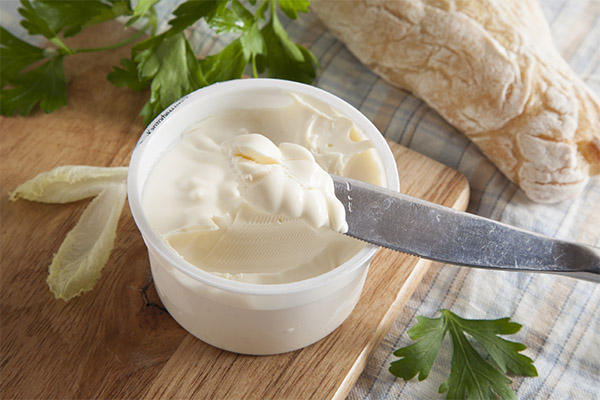
General benefits
- Dairy products have a beneficial effect on the work of all human organs, contribute to the replenishment of vitamins and other necessary elements for health. Cream cheese is no exception. It contains high-quality protein - casein, which is directly involved in the release of useful amino acids. And they contribute to the improvement of muscle tissue, have a positive effect on the human brain.
- It includes vitamin A, which contributes to the normalization of vision. Maintain balance, improve the skin, strengthen the hair vitamins E, D.
- Especially useful processed cheese for people who are subjected to frequent stress.
- Although in small quantities, it contains calcium, which has a strengthening effect on the spine, bone tissue, nail plates, hair.
- Melted cheese is quickly digested by the body and does not contain cholesterol.
- The presence of this product in the diet will have a positive effect on the digestive system and improve blood circulation.
For women
Micro and macronutrients, vitamins included in the structure of melted cheese help to improve the work of the female body. Vitamins have a positive effect on hair and improve skin color. In addition, the use of this product reduces the production of cortisol (stress hormone).
For Men
A sufficiently high content of proteins makes processed cheese a useful product for men. After all, this element contributes to the production of hormones, on which the health of the stronger half of mankind depends.
When pregnant
Homemade processed cheese, made from natural dairy products, contains a lot of calcium. This element is necessary for the complete formation of bone and muscle tissues of the fetus. Vitamins and amino acids replenish the supply of useful substances in the body of the future mother.
Melted cheeses available on the market will not benefit the body of a pregnant woman. On the contrary, all kinds of chemical additives can provoke allergies, failure of internal organs.
When breastfeeding
Breastfeeding women should be cautious about introducing dairy products into their diet. Although they are rich in calcium, potassium, phosphorus, and vitamins, they can cause allergies in the baby.
During this period, it is best to refrain from using products that contain vegetable fats, dyes, preservatives and emulsifiers, including processed cheese. In addition, the product contains a high proportion of sodium. This can affect the baby's digestive system.
When breastfeeding, it is recommended to try introducing processed cheese prepared at home into the diet.
For babies
Processed cheeses contain a minimum amount of elements necessary for the full development of the child. Sweet kinds can be used as a treat, but not often. Their composition can provoke an allergic reaction. Children under 3-4 years old generally not recommended to use processed cheese.
When losing weight
All kinds of processed cheese refers to the caloric. But this indicator does not contribute to the complete rejection of the product. All of its nutritional and positive properties can also be used for the benefit of the body.
A small slice of melted cheese on a bran bun or a thinly spread layer of paste on wholemeal bread is useful in the morning hours. Such a sandwich will satisfy hunger, saturate the body with vitamins, and give extra vigor for the whole day.
Culinary Applications
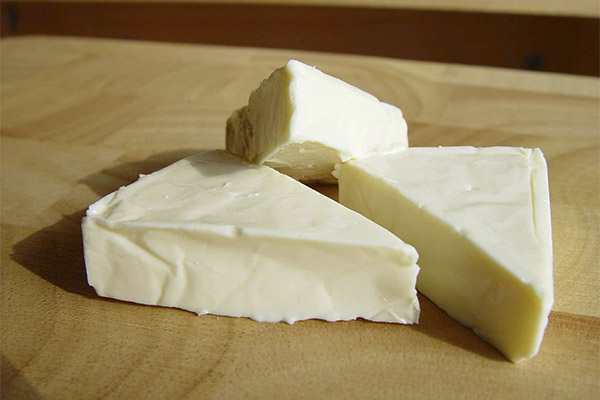
- Cream cheese is used as an independent product or as one of the ingredients in a variety of dishes.
- Pasty types are used to prepare a variety of snacks. They are convenient to spread on pita bread and make it into a roll. Cheese perfectly combines with meat, herbs, mushrooms, eggs, shrimp meat.
- Indispensable such a product and for a quick breakfast. Toast smeared with cheese or a hot sandwich will serve as a delicious and nutritious addition to the morning cup of tea or coffee.
- Processed cheese (usually slice cheese) is also used for soups. If you use the product with additives of Provencal herbs, herbs, mushrooms, the first dish acquires a refined flavor. In addition, such a soup is very hearty.
- In vegetable, meat or salads with seafood, cream cheese or smoked cheese is one of the favorite ingredients of hostesses.
- They add this product to minced meat. It not only gives the usual cutlets a new taste, but also makes them more juicy and tender.
- The crust on the potato casserole, lasagna from processed cheese is softer and more pleasant in taste than from hard cheeses.
- Sweet types of processed cheese are used as a dessert. It is much loved by children, and for adults it makes a great snack of a light white wine.
- Some housewives use sweet cheeses as a filling for pancakes.
Finding a use for processed cheese in cooking is easy enough, it depends on the imagination of the cook.
Harm and contraindications
Melted cheese, cooked at home, can not harm the body, except in the case of individual intolerance to lactose or other constituent component. But the product that is available on sale, can adversely affect health.
- Processed cheeses contain a large percentage of sodium. This component is not good for the heart and can cause high blood pressure.
- For people who are prone to allergies, phosphate flavorings and all kinds of flavor enhancers can contribute to the appearance of rashes. In extreme cases, they can even lead to throat swelling.
- Chemical additives can impair kidney function by causing fluid retention in the body.
- All chemical additives have a negative effect on the stomach, especially people with hyperacidity.
Many manufacturers use vegetable fats instead of natural dairy ingredients. For example, rapeseed or palm oil in the composition of processed cheese turns it into a cheese product. It has no useful properties, in addition, is of low quality and can provoke an allergic reaction.
Processed cheese of all kinds is contraindicated:
- In chronic diseases of the stomach and duodenum;
- Kidney problems;
- tendency to obesity and overweight;
- hypertension;
- heart failure;
- High cholesterol.
Consumption of processed cheese in moderate doses, compliance with all recommendations of doctors is important for people with chronic diseases of internal organs. Only in this way the product will not cause significant harm.
It is not recommended to include it in the children's diet (under 4 years). Sausage semi-smoked processed cheese should not be given to children under 7-10 years.
How to choose and store processed cheese
Useful and valuable components are contained only in high-quality types of processed cheese. Therefore, when buying, you should pay attention to such nuances:
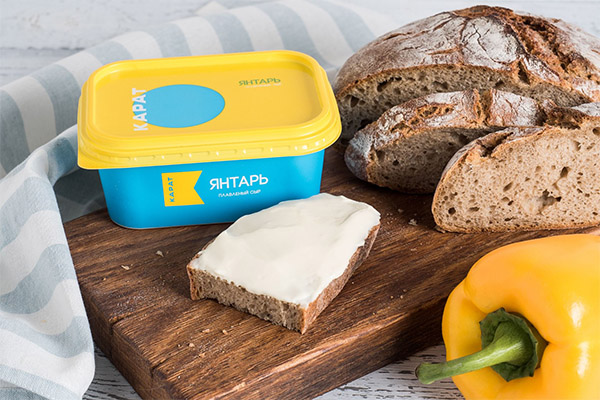
- Name. If the goal is to buy a natural product, the name should include the word "cheese", not processed product or cheese. This is usually the name manufacturers give to cheese products made from vegetable fats.
- Tightness and integrity of the package. A good product can not be crumpled, deformed. The presence of such defects indicates improper transportation and storage of processed cheese. If it is a pasty cheese in a plastic jar or box, it is necessarily the presence of marking PP. This abbreviation means the suitability of the material for food storage.
- Shelf life. The maximum shelf life of processed cheese is 180 days.
- The composition indicated on the label. The components should be natural dairy, not vegetable. Additives, emulsifiers, flavorings should be present only in small amounts. Usually the longer the list of ingredients, the less natural the product.
- Color. Fresh cheese is white or gently creamy in color, and uniform. Its surface is smooth and slightly shiny. Depending on the additional additives color varies.
Cream cheese can only be stored in the refrigerator. After opening, the product must be consumed before the period specified by the manufacturer.
Can you store in the freezer
If necessary, sliced or sausage cheese can be placed in the freezer. But after freezing, the product will lose its integrity, so you should not serve it in defrosted form to the table. Such processed cheese is used for cooking soups or dishes baked in the oven.
He can be stored in the freezer for no more than a month.
How to make processed cheese at home
Melted cheese, made at home, using natural ingredients, will bring much more benefits to the body than a store-bought product.
Recipe for processed cheese based on cottage cheese
Ingredients:
- 20% cottage cheese - 1 kg.
- 3,2% fat milk - 1 l.
- Butter - 70 gr.
- Egg - 2 eg.
- Salt - 1/3 of tsp.
Cooking steps:
- Pour milk into a saucepan. Set it on fire and bring to a boil.
- Pour cottage cheese. Stir. Cook for about 25 minutes.
- Remove the pot from the heat. Strain the milk-cheese mixture through a sieve, thus getting rid of unnecessary liquid. When all the water drains out, send the resulting mass back into the pan.
- Add the eggs. Then add salt and butter. Thoroughly stir with a wooden spoon.
- Put the pan on a stove, turn on medium heat. For the next 15-25 minutes the mass will melt. In the process, you can further reduce the heat of the stove.
- Cover a colander with gauze rolled up in 2-3 layers.
- After the allotted time, put the mass on the prepared colander. All liquid has to run out.
- Wrap the cheese mass in gauze.
- Put on a plate. Put a weight on top. It will give solidity to melted cheese.
- Put it to the fridge for 20-25 hours.
Homemade processed cheese is ready.
What can be made from melted cheese: recipes
Cheese Soup with Broccoli

Ingredients:
- 400 ml of chicken or vegetable broth.
- 1/4 tsp salt.
- 400 ml of cream (can be halved with milk).
- 1/3 tsp. ground pepper.
- 300 g broccoli florets.
- 1/2 tsp. ground paprika.
- 250 g grated melted cheese.
- 0.5 tsp. dry mustard.
- 5 tbsp. butter.
- 1/4 tbsp flour.
- 1 small onion.
- 2 small garlic cloves.
- 2 large carrots.
Step-by-step cooking:
- In a small frying pan put 1 tbsp. oil, finely chopped onion. Saute until golden. Add chopped garlic. Fry, stirring, for 30-40 seconds.
- In a saucepan put the remaining oil, pour in flour. Stirring constantly with a wooden fork, cook for 3-4 minutes.
- Add broth in a thin stream. Whisk until smooth.
- Add cream in batches, without forgetting to stir constantly; boil for 15-20 minutes on moderate power.
- Add carrot cut into thin slices, broccoli, fried onion, garlic, and remaining seasonings to the boiling creamy broth. Cook for 25 minutes, stirring.
- Put most of the grated cheese into the pan, stirring. Cook for another 2-3 minutes until the cheese is dissolved.
- Pour the ready dish into plates, garnish with the remaining cheese.
Store the light cheese soup can be 3-4 days in the fridge.
Salad "Tenderness"
Ingredients:
- Chicken fillet - 300-400 g.
- Medium size onions - 2 pcs.
- Melted cheese - 2 pcs.
- Mushrooms - 700 gr.
- Egg - 4 pcs.
- Vegetable oil - 3 tbsp.
- Butter - 50 gr.
- Mayonnaise.
- Salt.
Method of preparation:
- Boil eggs, fillet. Onion fry in vegetable oil until it turns dark golden. Peel the mushrooms, put butter in a pan, pour 1 tbsp of vegetable oil. When the butter melts, put chopped mushrooms. Cook for 10-15 minutes.
- Grate melted cheese. Dice the filet into medium-thickness slices. Separate the egg yolk from white and chop them separately.
- Lay out the salad in layers, spread mayonnaise on each one: onion, chicken fillet, fried mushrooms, squirrels, melted cheese.
- Decorate the salad with finely chopped chicken yolks.
Hot grilled sandwiches
Components:
- 1 package of toast bread.
- 4 tbsp chopped parsley and dill mixture.
- 200g melted cheese with herbs.
- 2 tbsp. finely chopped shallots.
- 400g melted cheese with bacon flavoring.
- 6-8 tbsp mayonnaise.
- 300 g Dutch cheese.
- 2 tsp. mustard.
Preparation:
- In a small bowl, mix together all the cheese, herbs, and onion.
- In another bowl prepare mustard-mayonnaise mixture.
- Spread the slice of bread with this mixture. Spread cheese mixture. Cover with another slice of bread.
- Put the sandwiches on a baking tray, lightly greased with vegetable oil.
- Put them in the oven. Turn on the grill and turn the oven to 180°C. Cook for 2 minutes on each side until the bread is lightly browned.
These sandwiches can be cooked on an open grill or on the stovetop.
How to Melt Melted Cheese
The product resulting from the processing of hard cheeses is excellent for melting, even at low temperatures. Usually for the preparation of soups and dishes in the oven use sliced cheese.
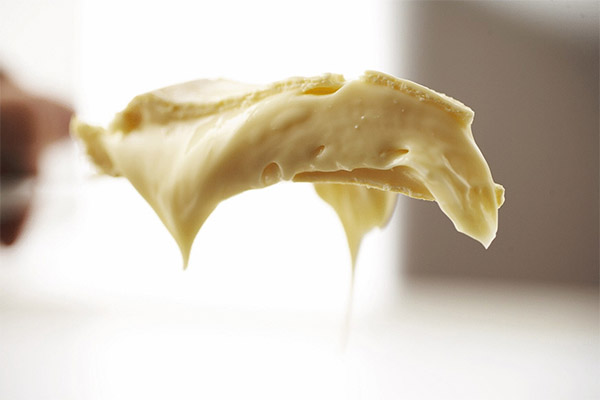
It is cut into thin slices or shredded on a grater. The product can be melted in a boiling broth, in a steam bath, in a pan. Dishes baked in the oven with the addition of melted cheese, cover with foil in advance. This will serve as protection against drying out and the formation of appetizing cheese crust.
For cooking hot sandwiches suit and melted cheese in the form of plates. It melts well even at the minimum mode in the microwave oven.
Can cats be given processed cheese
Pets are very intelligent animals. They will never eat foods that can harm their health. Therefore, if a cat likes processed cheese, it can be included in the diet. But you should not give your pet more than one slice a day.
The exception is smoked sausage varieties. They should not be fed to cats in any case, because these cheeses contain carcinogens that are dangerous for the animal. They have a negative effect on kidney and liver function.
Cream cheeses made on the basis of vegetable fats do not contain any useful substances. Most often they contain a large number of flavorings, food colorings, stabilizers, which can cause digestive problems, in some cases even allergic reactions.
Interesting facts about processed cheese
- The first batch of triangular shaped processed cream cheese was produced by James Kraft in 1950.
- The first batch of processed cheese in the Soviet Union was produced at the Moscow plant in 1934.
- The famous in the post-Soviet territory Druzhba, Yantar and Omichka cheeses appeared on the shelves in 1960. Until now, these types of processed cheese are very popular.
«Important: All information on the site is provided solely for introductory purposes only. Before applying any recommendations, consult a health care professional. specialist. Neither the editors nor the authors shall be liable for any possible harm caused by materials."

